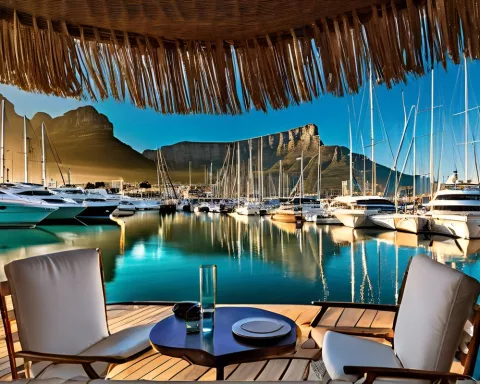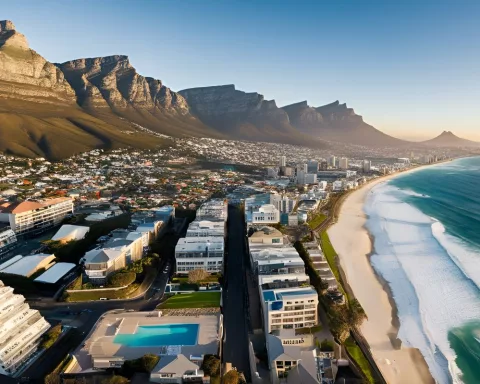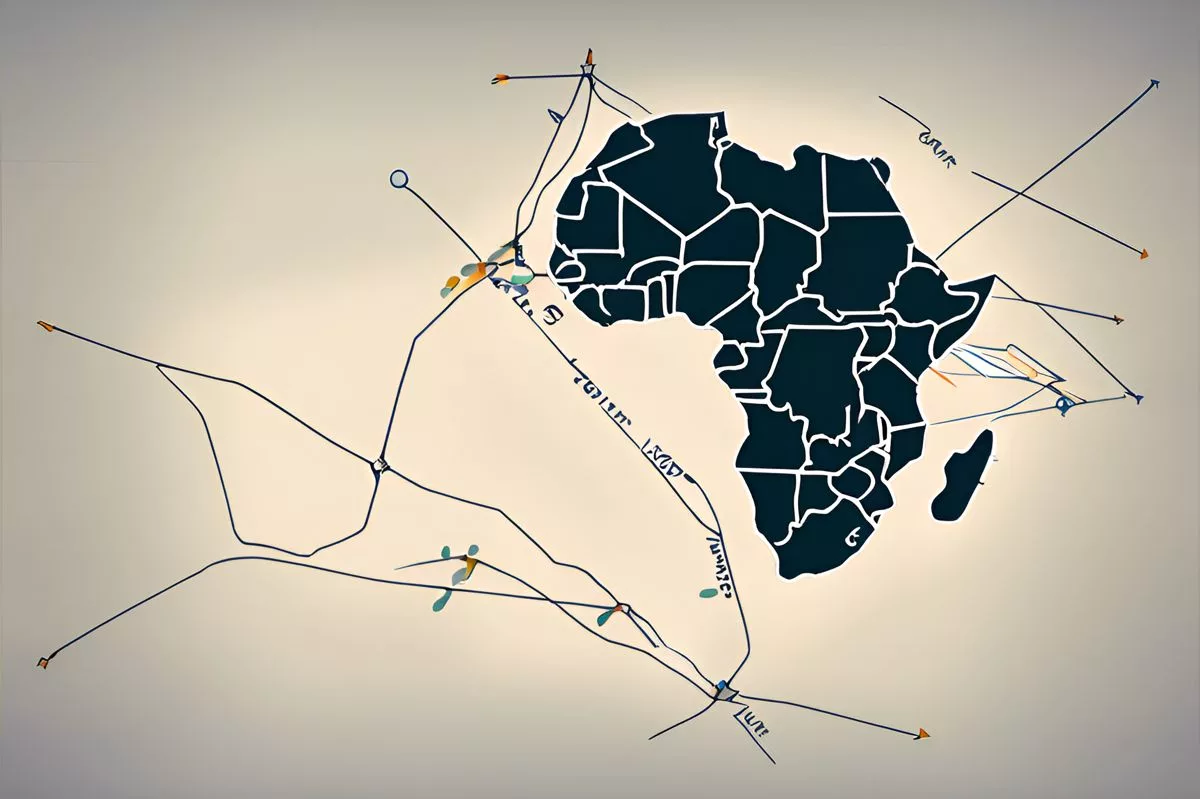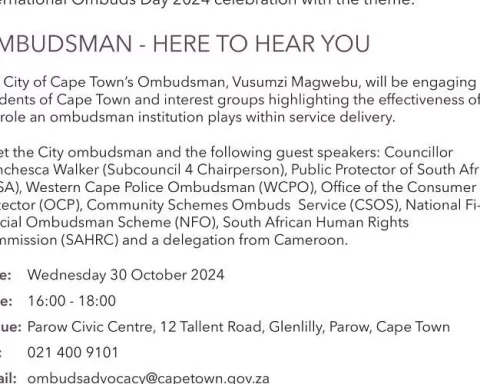Excitement is in the air as two Japan Maritime Self-Defence Force training vessels, JS Kashima and JS Shimakaze, visit Cape Town for the first time since the establishment of the Maritime Self-Defence Force. The vessels are currently on the 175-day worldwide venture that is the JMSDF’s flagship training program, the Overseas Training Cruise 2024. While in Cape Town, the public will have the opportunity to visit the vessels, offering an exclusive peek into the world of the Maritime Self-Defence Force.
What is the Japan Maritime Self-Defence Force’s Overseas Training Cruise 2024?
The Japan Maritime Self-Defence Force’s flagship training program, the Overseas Training Cruise 2024, is a 175-day worldwide venture that enriches trainees’ understanding of international naval activities and cultivates a global outlook. The program provides young officers with practical experience to complement their theoretical knowledge from the Officer Candidate School. Two training vessels, JS Kashima and JS Shimakaze, are currently on this voyage, covering 35,000 nautical miles across seven seas and oceans.
Historical Arrival at Cape Town Port
A seminal moment in maritime history is about to unfold, as the Japan Maritime Self-Defence Force (JMSDF) visits Cape Town in a landmark event this week. The city’s port welcomes two JMSDF training vessels, the JS Kashima and JS Shimakaze, for the first time since the establishment of the Maritime Self-Defence Force in the wake of World War II.
The city is abuzz with excitement and anticipation as the South African Naval Band leads the celebration, weaving a harmonious backdrop to this maritime camaraderie. Adding to the celebratory atmosphere, the Flag Officer Fleet (FOF) of the South African Navy is set to honor the visiting ships, marking the beginning of various activities. These events underscore the solidarity between the two nations, a bond that transcends language barriers and is strengthened by seafaring relations.
Open House on the Decks and The Training Program Aboard
To foster maritime hospitality, the JS Kashima and JS Shimakaze will invite the public on board, giving South African citizens an exclusive peek into the world of the Maritime Self-Defence Force. This public access is not just a gesture of transparency by the Japanese naval force, but also serves as a valuable learning experience for those unfamiliar with the intricacies of a naval ship.
The two vessels are currently on the Overseas Training Cruise 2024, the JMSDF’s flagship training program. Roughly 570 individuals are part of this voyage, including a remarkable group of 190 graduates from the 74th General Officer Candidate Course. This program is a crucial component of JMSDF’s training strategy, providing young officers with practical experience to complement their theoretical knowledge from the Officer Candidate School.
The Voyage and Leadership
The training cruise is a worldwide venture, sailing across the Philippine Sea, South China Sea, Indian Ocean, Atlantic Ocean, Mediterranean Sea, Caribbean Sea, and the Pacific Ocean. The mission is to enrich the trainees’ understanding of international naval activities and cultivate a global outlook. Over the course of this 175-day adventure, commencing on May 20 and concluding on November 11, the trainees will journey an impressive 35,000 nautical miles (approximately 65,000 km).
Rear Admiral Nishiyama Takahiro, commanding officer of the training squadron, spearheads this monumental cruise. His guidance and leadership play a pivotal role in shaping the experiences and lessons that the trainees will acquire on board.
Reflection on the JSDF and the Significance of the Visit
At a recent ceremony in Pretoria, Japanese Ambassador Ushio Shigeru noted that the visit coincides with the establishment of the Japan Self-Defense Force (JSDF) in July 1954. The JSDF was created during a critical period fraught with geopolitical tension in East Asia, nine years after Japan’s defeat in World War II and three years after the signing of the Treaty of Peace with Japan.
Ambassador Shigeru seized the moment to reflect on the evolution of the JSDF over the past seven decades. From a modest self-defence force, it has metamorphosed into a significant contributor to international peace and security. The JSDF’s impact extends beyond military obligations—it plays a pivotal role in establishing a peaceful nation and saving lives in the wake of large-scale domestic and global disasters.
As Cape Town readies to bid adieu to the JS Kashima and JS Shimakaze, set to depart at 9 am on Saturday, it’s clear that this visit is more than a mere historical event. It embodies the undying spirit of maritime forces, their dedication to peace, and their role in fostering global understanding and fellowship. The JMSDF’s visit is not just a footnote in the annals of history, but a significant milestone in the ongoing saga of international maritime relations.
1. What is the Japan Maritime Self-Defence Force’s Overseas Training Cruise 2024?
The Overseas Training Cruise 2024 is the flagship training program of the Japan Maritime Self-Defence Force, a 175-day worldwide venture that enriches trainees’ understanding of international naval activities and cultivates a global outlook.
2. What vessels are currently on the Overseas Training Cruise 2024?
Two training vessels, JS Kashima and JS Shimakaze, are currently on the Overseas Training Cruise 2024, covering 35,000 nautical miles across seven seas and oceans.
3. What is the significance of the JMSDF’s visit to Cape Town?
The JMSDF’s visit to Cape Town is a landmark event, as it marks the first time the training vessels JS Kashima and JS Shimakaze visit the city since the establishment of the Maritime Self-Defence Force. It also underscores the solidarity between the two nations and strengthens seafaring relations.
4. Will the public have access to the vessels?
Yes, the JS Kashima and JS Shimakaze will invite the public on board, giving South African citizens an exclusive peek into the world of the Maritime Self-Defence Force.
5. Who is Rear Admiral Nishiyama Takahiro?
Rear Admiral Nishiyama Takahiro is the commanding officer of the training squadron spearheading the Overseas Training Cruise 2024. His guidance and leadership play a pivotal role in shaping the experiences and lessons that the trainees will acquire on board.
6. What does the JMSDF’s visit symbolize?
The JMSDF’s visit symbolizes the undying spirit of maritime forces, their dedication to peace, and their role in fostering global understanding and fellowship. It also highlights the evolution of the JSDF over the past seven decades, from a modest self-defence force to a significant contributor to international peace and security.












